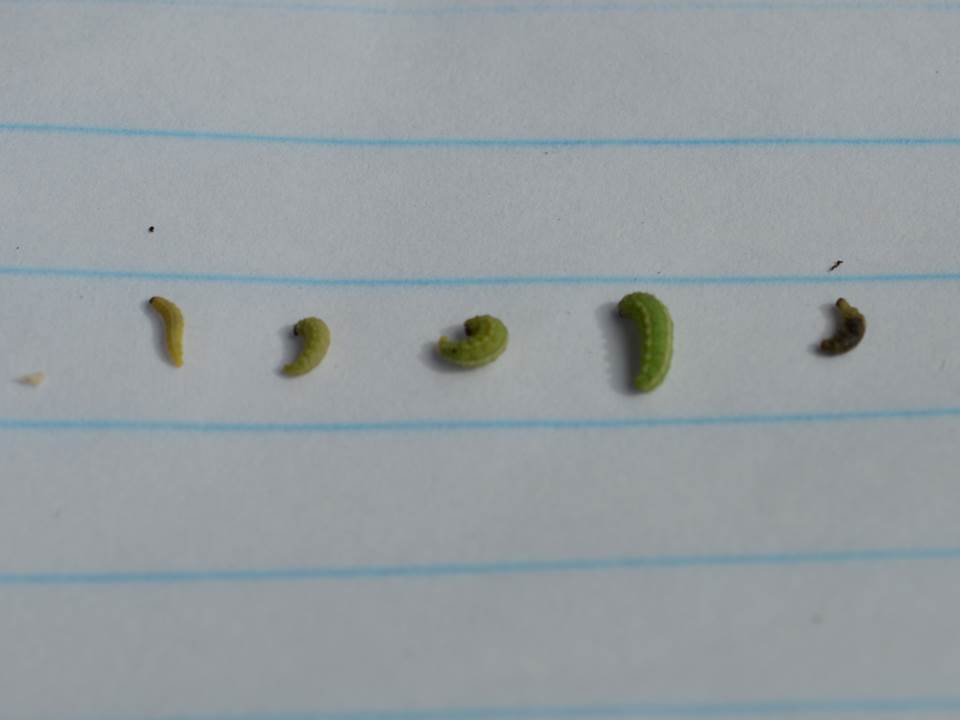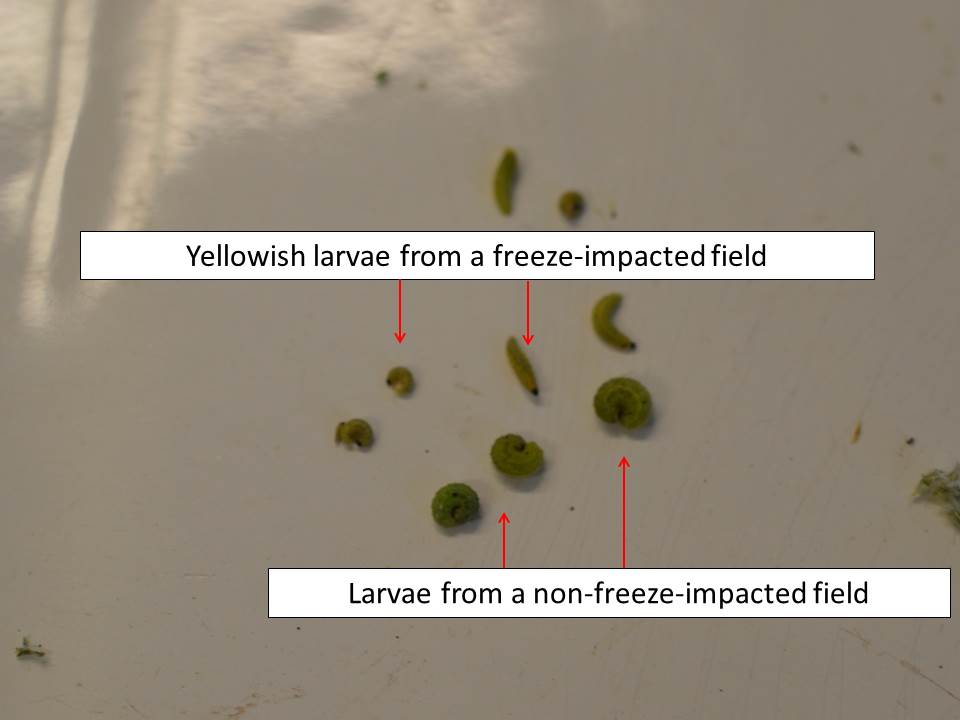–by Dr. Bob Bauernfeind
For the past several weeks, in Ward Upham’s compilation of Hot Topics, bagworms have been mentioned. Last week, they were designated as Pest of the Week. This is not a real surprise given the time of the year. Why? As pictured below, the colored time frames are indicative of bagworm feeding capabilities. Smaller (generally overlooked) larvae in the green and yellow zones represent periods when larvae are small “nibblers” — negligible visible feeding damage.
The orangish/amberish represents “caution” — larger larvae becoming more destructive but not necessarily causing noticeable damage. But now (August) is the red danger zone where (as is typical for all lepidopteran larvae) rapidly growing larvae in their last feeding stages consume the greatest amount of foliage (create the most noticeable damage) that has people reacting to the presence of bagworms.

The question now is, “Is it too late to spray for bagworms?” Currently, it is not too late to spray! Notwithstanding their size, as long as bagworms are actively foraging, they can be effectively controlled. Those directly hit by an insecticide spray will be killed by contact action. Those withdrawn into their bag at the time of the spray application will likely succumb after coming-in-contact with treated foliage, but most certainly after consuming treated foliage.
How does one determine if bagworms are actively feeding? OBSERVATION! “Active bags” can be identified by newly-clipped greenery at the bag opening. Also, with a bit of patience, simply watch for a bagworm to reopen its bag, poke out its head, and resume feeding.

When is it too late to spray for bagworms? That also is easily determined. When a bagworm completes its feeding cycle, it anchors its bag to the host plant with a distinct, highly visible white silken “tie”, after which it permanently closes the “front door”. Spraying at this point-in-time is futile because the thick leathery bag protects the bagworm within.

According to NPIRS (National Pesticide Information Retrieval System), currently in Kansas, there are 500 products registered for use against bagworms. Some active ingredients currently contained in insecticides available for purchase and use by homeowners include acephate, Bacillus thuringiensis, bifenthrin, carbaryl, cyfluthrin, cyhalothrin (gamma and lambda), deltamethrin, malathion, permethrin and spinosad. In various trials, I have used the bolded AIs and found them all to be effective against bagworms, even those considered large and close to the end of their feeding cycle. Some homeowners may still be in possession of discontinued products with the active ingredients chlorpyrifos, dimethoate and/or diazinon. All were effective against bagworms in trials. Although it does not appear to have been written into any legalized directive (per personal communication with the KDA), discontinued products may still be used if done in accordance with the instructions appearing on the product label. Residents may not share or give partial containers to neighbors as this would be considered distribution.
Excluding products containing Bacillus thuringiensis (minimal effectiveness against larger instar larvae), regardless of which product/AI is applied, the critical factor for successful bagworm population reduction is THOROUGH COVERAGE TOP-TO-BOTTOM! Hastily applied light/misty sprays to tree and shrub peripheries will lead to disappointing results.
.





